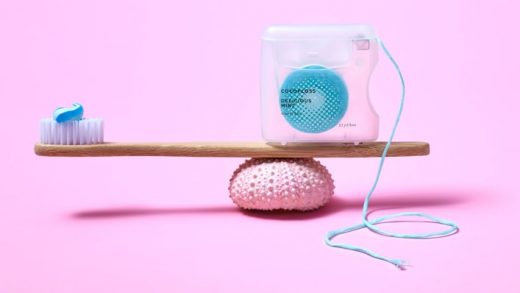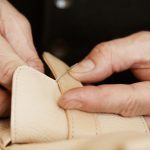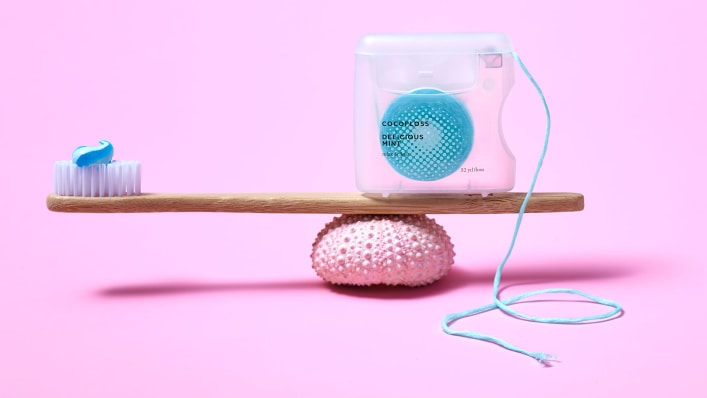How This Unique Tooth Floss Turned A Dull Ritual Into A Luxury Treat
“Flossing is always associated with dread, neglect, or guilt,” says Chrystle Cu, a dentist and cofounder of Cocofloss. “I really wanted people to think about flossing differently.” And she has.
Cu and her sister Catherine Cu have put a new spin on an oral hygiene staple–one that shuns the standard Gore-Tex fiber found in most floss brands for a flavorful sponge-like texture composed of hundreds of expanding microfiber filaments. Fans say the design makes for a more efficient and satisfying experience that, the cofounders hope, can do what some may think is the impossible: make flossing enjoyable.
“No one thinks of an exfoliating face wash as a chore,” says Chrystle Cu, comparing oral hygiene to beauty routines. “It’s a delight, a treat; you took some time to take care of yourself. Why can’t flossing be just as fun?”

The rebranding of a bathroom item few people think fondly of has paid off for the Cu sisters. Since their launch in 2015, they have positioned their product as a fashionable item within the ever-growing wellness space and even got their product on retailer websites that never carried oral care items. This includes Urban Outfitters, Free People, Anthropologie, and Sephora (where it boasts roughly 7,000 customer likes). In the last year alone, Cocofloss has gone from availability on 10 retail sites to more than 100.
Tastemakers have latched on as well. Goop editors report that after using it once, “you’ll be forever ruined for regular floss,” while Domino magazine hails it as a “stylish” dental product you “need.” Meanwhile, hundreds of online reviews have fans claiming they now look forward to getting gunk out of their teeth. Some are calling it a great idea for a Christmas stocking stuffer.
“From the day we started the company, we were thinking about this idea of getting people excited about floss,” says Catherine Cu.
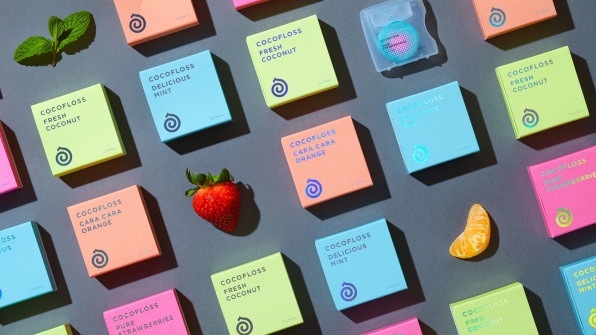
How Can I Get My Patient To Floss?
For the past decade as a general dentist at Young Dental Group in San Mateo, California, Chrystle Cu pedaled the same message, over and over again, to her patients: Flossing will save your teeth. It nearly always fell on deaf ears.
“Anytime you mention flossing to a patient, their eyes start to roll back in their head,” she explains. “There is nothing new to say–they already know. Most of the time, they walk in and say, ‘I haven’t been flossing, go ahead and lecture me about it,’ like they’re ready. Their behavior never changes.”
In the first six months of 2013, she filled more than 200 cavities in areas between teeth that proper flossing may have prevented. While most dentists outsource cleanings to dental hygienists, she did it herself in that period to get a good understanding of why patients hated doing what they should. And then, it hit her. Maybe it was the floss itself: bland, flavorless, and mostly inefficient.
“People didn’t care about floss–part of it was just no one had spent any time thinking about the design at all,” she says.
The more popular floss brands use nylon or Teflon, strong materials that won’t shred. But at the same time, they’re also quite slippery and unable to fully grasp plaque, says Chrystle Cu. Her sister Catherine compares it to attempting to clean a dirty dish with a plastic bag.
“How do I convince patients to floss when what was available for them wasn’t very effective?” Chrystle Cu recalls asking herself. “I knew I wanted to create something better.”
It wasn’t just the design, which no company had truly improved on in decades. It was also the entire messaging surrounding flossing: that it was burdensome and dull. Just a glance at the supermarket aisle, notes Chrystle Cu, shows it was no way desirable: All the items display identical products, colors, and tastes.
“It’s like buying a toilet plunger,” she says of how most consumers think about it tooth floss, “like, who cares what it looks like?”
In researching ways to reinvent floss, she gathered dozens of materials and fibers, even going so far as to pick up seaweed from the beach to test its elasticity. But it wasn’t until 2015, at the urging of her sister–a financial analyst at the time–that she fully committed to starting a business.
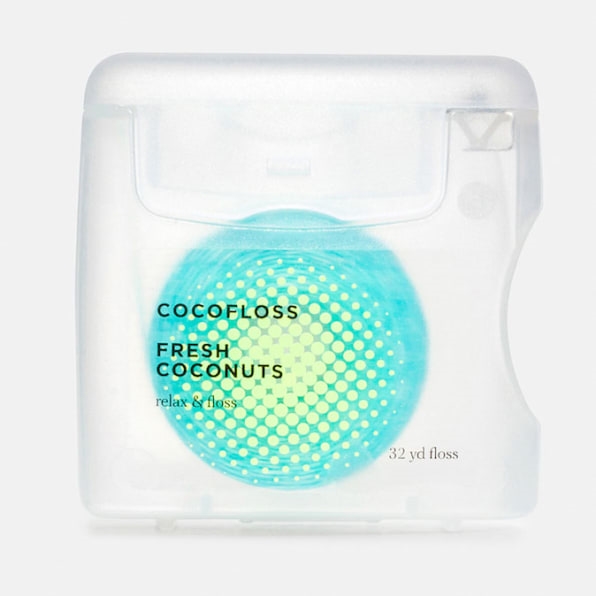
For the next six months, the sisters called dozens of manufacturers and factories around the globe until they found their final material: 500 loosely woven polyester filaments coated with microcrystalline wax, coconut oil, essential oils, and aromas. The texture gives it scrubbing power, yet because the materials are woven together, it’s also quite like elastic. The fibers are colored bright turquoise blue so that consumers can see their contrasting yellowed plaque (Chrystle Cu refers to it as “immediate feedback”). The coconut oil helps the threads better fit between tight spaces, and then the fibrous threads expand to wash the surfaces clean. It almost works like a net that traps plaque.
The inclusion of coconut oil was a nod to the trendy ingredient’s popularity with female wellness enthusiasts. At her practice, says the dentist, a substantial portion of clients inquired about coconut oil pulling, the ancient Ayurvedic hygiene technique of rinsing one’s mouth with coconut oil (made popular by the likes of Miranda Kerr). It’s been said to reduce bacteria, but the practice’s effectiveness is debated by dental professionals.
“They were willing to spend 20 minutes swishing coconut oil in their mouth but unwilling to floss,” says Chrystle Cu with a slight hint of exasperation. “I found that really shocking, since it only takes one minute–maximum two–to floss . . . People were willing to [spend 20 minutes] because they understood the benefits of coconut oil.”
Coconut oil, Cu later learned, served as a strong lubricant to ease fibers between teeth. It also, studies suggest, contains antibacterial properties that further prevent tooth decay. Infusing it into the product therefore made it not only useful, but marketable.
When it came to flavor, Cu relied on some tried-and-true tricks she learned during her hygienist days. When patients came in for tooth cleanings, she offered them over 20 different polish flavors. They loved it.
“I always received really positive feedback, like, ‘oh this is so nice, it’s like I’m at an ice-cream parlor,’” she recalls. “I wanted that same positive, unexpected association with dental cleaning.”
To that end, Cocofloss was developed in four flavors: mint, strawberry, coconut, and orange.
Once the product was finalized in the fall of 2014, the Cu sisters sent samples to a hundred friends and family members with something they called The 21 Day Challenge. The goal was to get people to commit to just three weeks of flossing. They also launched a social media campaign titled #teethforlife, which was meant to promote what they’re selling: having your teeth for your whole life.
“For the generations before us, it was not expected to have your teeth for your whole life,” says Chrystle Cu, noting statistics such that over 50% of Americans aged 65 and up have dentures. “Even people we know don’t have all their teeth.”
After three weeks, the Cus surveyed participants in hopes of improving on their product. What they learned, Catherine Cu explains, is that “flossing is really an acquired taste–the feeling of having clean gums and clean teeth is something that people don’t know how to appreciate until they know what it feels like.” Once the sample group used the product for roughly 7 to 10 days, they found themselves desiring it daily.
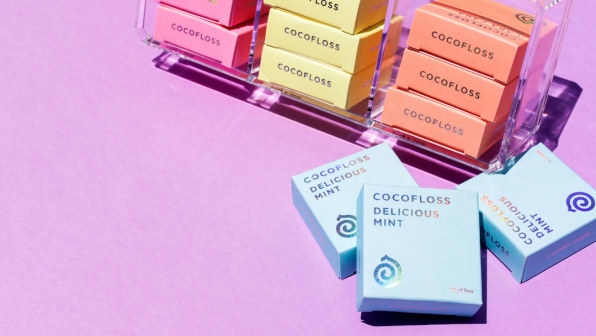
Rebranding The Ritual
In 2015, Cocofloss finalized the first production batch and officially launched the product–via a direct-to-consumer platform–for $8. The finished version came in bright, modern boxes in splashy tropical colors like tangerine orange, neon green, and bright pink. The website, meanwhile, featured cute cartoonish-explainers on tooth health with the help of googly-eyed illustrations. Clinical terms were dropped in favor of describing unclean teeth as “sad,” “stinky,” and “busted,” while flossed teeth were “happy” teeth. Everything was meant to convey a playful yet educational approach to oral care.
During those first few months, the startup focused on the dental community, sending out samples to practices. That sector ended up becoming one of Cocofloss’s biggest advocates: Countless reviews on Sephora.com are written by dental hygienists, while dozens of dentists promote it on their personal Instagram accounts.
Daniel Rubinshtein is one such dentist who received samples and now recommends it to patients at his practice in Brooklyn. He says the spongelike texture gets between gums to better absorb bacteria. “I think it’s a much better product [than competitors],” he tells Fast Company. “It has a different feel to it and the essential oils give it an overall better experience for the patient.”
Throughout the next year, the company reached out to wellness influencers, and sales began to grow by word-of-mouth. It wasn’t until late 2016 that Cocofloss was available on retailer websites, the majority of whom contacted them first. Goop, for example, called the Cu sisters after they sent a sample to Gwyneth Paltrow, who reportedly loved it. Within six months, the lifestyle site was selling it online and featuring it at events such as the Goop conference in Los Angeles.
Thereafter came beauty sites such as Sephora, Beauty Habit, and CE Bigelow, as well as fashion retailers including Anthropologie and Urban Outfitters. As such, Cocofloss’s customers are 80% women.
While Cocofloss will not release growth numbers, it hints that its viewing further growth beyond the likes of Soulcycle fans. The company intends to release more flavors–some of them seasonal limited-editions–and perhaps even venture into more oral care products. The question remains, however, as to whether a product that costs nearly double that of the market price can ever make its way into supermarkets.
Asked whether she thinks the price point might hurt expansion, Chrystle Cu says it’s quite the opposite: “I think it actually helps,” she explains, “because it positions differently and sets us apart from all the other flosses.”
The sisters found that, prior to their product, floss was rather commodified. When every other brand set the price between $3 to $4, “we needed to provide some signal to people that they’re paying for something that’s different,” adds Catherine Cu, who ultimately believes it’s still a reasonable price. “Our 32-yard box lasts for two months, which makes one’s monthly investment $4.”
Still, Cocofloss isn’t ruling out the grocery aisle, alongside your Glide, Oral B, and Gum. They’re looking out to convert many more “floss addicts” in hopes of changing the depressing statistics surrounding cavities (only about half the population say they floss). The company, which grew from 5 to 13 employees in the last year, moved to a warehouse in San Mateo in June to expand their inventory.
“I hope one day to really make Cocofloss available to everyone since we really do believe it’s the best and has the potential to make a lot of people much healthier,” says Catherine Cu. “We just need to help people build a habit, and, once that habit is built, it becomes something that people remember to do and want to do on a daily basis. They’ll crave it.”
Fast Company , Read Full Story
(78)

